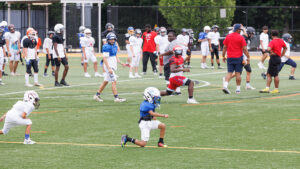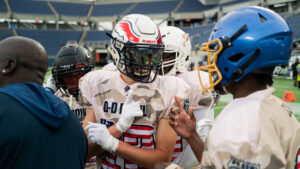Introduction: Warm-up and cool-down exercises are often overlooked in the world of football. However, they play a crucial role in preparing the body for intense physical activity and aiding in recovery post-game or training. In this blog post, we will explore the significance of incorporating proper warm-up and cool-down routines into your football regimen and how they can enhance your performance while minimizing the risk of injuries.
Understanding the Warm-Up: a. The purpose of a warm-up: The warm-up phase gradually increases heart rate, body temperature, and blood flow to the muscles, preparing them for the demands of football. b. Dynamic stretching: Dynamic stretching exercises that mimic the movements of the game help to improve flexibility, range of motion, and muscle coordination. c. Activation exercises: Targeted exercises that activate specific muscle groups used in football can enhance muscle readiness and reduce the risk of strains or sprains.
Benefits of a Proper Warm-Up: a. Improved performance: A well-executed warm-up primes the body for optimal performance by enhancing muscular power, speed, and agility. b. Injury prevention: A thorough warm-up helps prevent muscle pulls, strains, and other common football injuries by preparing the body for the physical stresses it will encounter. c. Mental readiness: Warm-up exercises also help football players focus their mind and mentally prepare for the upcoming game or training session.
Components of an Effective Warm-Up Routine: a. Aerobic activity: Engaging in light cardiovascular exercise, such as jogging or cycling, increases heart rate and blood flow to warm up the body. b. Dynamic stretching: Performing dynamic stretching exercises for major muscle groups, including the lower body, hips, shoulders, and core, helps improve flexibility and joint mobility. c. Sport-specific drills: Incorporating drills that simulate football movements, such as running patterns, passing drills, and agility exercises, helps activate the specific muscles and neuromuscular pathways required for the sport.
Understanding the Cool-Down: a. The purpose of a cool-down: The cool-down phase helps the body transition from intense physical activity to a state of rest, promoting recovery and reducing muscle soreness. b. Static stretching: Including static stretches during the cool-down helps improve flexibility, relax muscles, and aid in the removal of waste products. c. Light aerobic activity: Engaging in low-intensity aerobic exercises, such as walking or light jogging, helps gradually lower heart rate and promote the removal of metabolic byproducts.
Benefits of a Proper Cool-Down: a. Enhanced recovery: A well-performed cool-down routine facilitates the removal of metabolic waste products, reducing muscle soreness and promoting faster recovery. b. Injury prevention: Cool-down exercises help prevent the pooling of blood in the extremities and the potential for dizziness or fainting after intense exercise. c. Mental relaxation: Cool-down exercises promote mental relaxation and can help football players unwind after a demanding training session or game.
Conclusion: Proper warm-up and cool-down exercises are essential components of a football player’s routine. By incorporating these practices into your training sessions and games, you can enhance your performance, reduce the risk of injuries, and promote quicker recovery. Remember, taking a few extra minutes to properly warm up and cool down is an investment in your overall football journey, helping you reach your full potential while staying healthy and injury-free.













